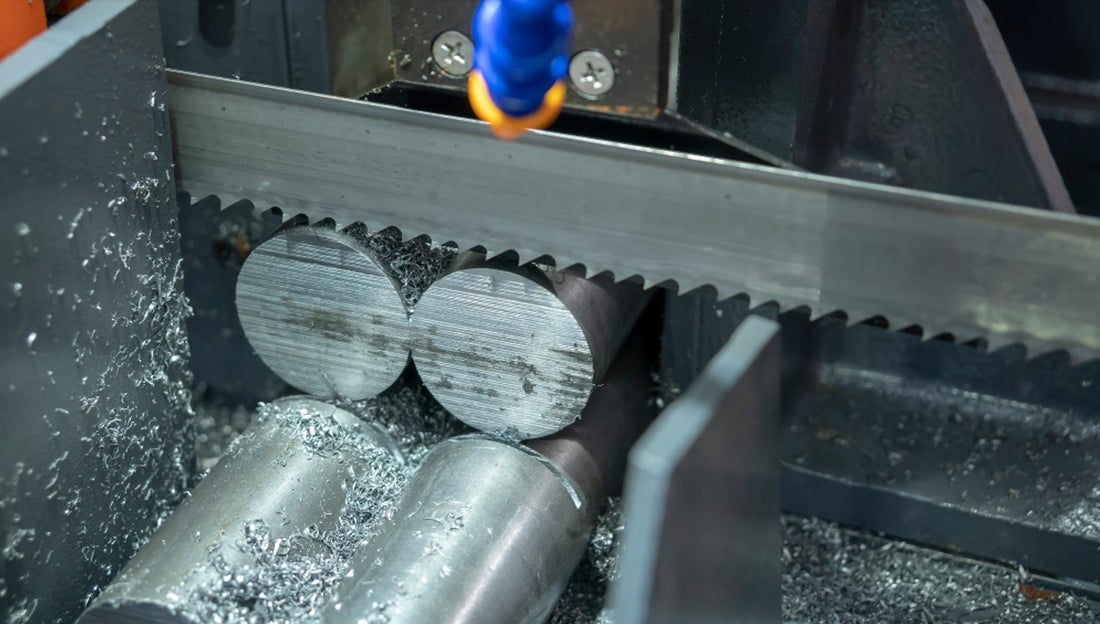When you’re getting into any woodworking, it helps to use the proper tools. Bandsaws are highly versatile pieces of equipment that can help professional and amateur woodworkers cut virtually any kind of wood with ease.
The precision cutting techniques and overwhelming efficiency of various bandsaw blades out there mean whether you’re cutting birch, mahogany, cedar, or oak, the right blade will be able to see you through your job with ease.
Today, we wanted to go over not only the different kinds of bandsaw blades that are accessible and useful to you but also the best way to utilize them in the first place.
Using bandsaws can be difficult, but they’re worth learning to use due to their practicality and immense range of uses. You can apply bandsaws to various types of woodcutting and produce quality results. Let’s get into all the variations that you can make use of!

Types of Bandsaw Blades
Finding the right type of blade will do wonders in helping you cut all kinds of wood. Let’s get into which types will be most helpful to you when you’re starting to investigate bandsaws and the types of blades that they utilize.
The three most common types you’ll likely run into are bi-metal, carbon steel, and carbide. These three types make up the vast majority of all the bandsaw blades you’ll find on the market. Between these three types, you’ll be able to find one that is ideal for cutting wood.
Carbide Bandsaw Blades
Carbide bandsaw blades have been hardened to cut through various materials, including almost any type of wood. Carbide is an alloy that combines carbon with another element with a lower electronegativity.
The resulting material is highly resistant to scratches, bending, and corrosion. This makes for an ideal saw blade, as they need to withstand a lot of force and various conditions.
We’re big fans of carbide saw blades for cutting wood, as they are pretty versatile and thin enough to deliver precise cuts. This means that carbide saw blades are a great option if you’re trying to find a saw that you can work into your cabinet-making or other kind of fine carpentry.
Carbon Steel Bandsaw Blades
Carbon steel blades are another popular type of bandsaw blade that has become quite popular over time. These blades offer users a rigid finish that can cut through various materials.
However, they aren’t necessarily our first pick for wood because they can be slightly thicker than other blades. This makes a carbon steel blade less ideal for work that requires a finer touch. However, they are still helpful for rough jobs or wider blade gigs.
Bi-Metal Bandsaw Blades
The final type of bandsaw blade we’ll cover is the bi-metal blade. This kind of bandsaw blade is an excellent pick for anyone looking for a blade that can cut the widest variety of materials.
This is a great pick for 95% of your cutting jobs, but that doesn’t mean it’s ideal for every job. We wouldn’t necessarily choose it for a carpentry gig or anything like that, as, again, it doesn’t cut quite as precisely as the carbide saw blades.
However, this might do the trick if you’re in a pinch and you don’t have access to any other kind of saw blade. If you’re cutting fallen logs to make lumber or just trying to get some rough planks out of scraps, then a bi-metal blade will do the job.

Blade Thickness and Number of Teeth
Something that plays a significant role in a bandsaw blade’s effectiveness for cutting wood is how that blade is built. Some blades have wider teeth – the pointy bits that you find on the sharp edge of a serrated knife – and others have teeth that are closer together.
The benefit of using a saw blade with wider teeth is that sawdust is more easily removed and less likely to jam up the cutting process.
However, this results in a rougher cut that isn’t quite as fine as you’d get with a saw blade with teeth that are closer together. A blade’s fine or coarse meter is determined by its TPI, or teeth per inch.
Generally, if you’re looking for fine cuts resulting in the smoothest edges possible, we recommend you go with a ¼” 6-TPI saw blade. And remember, for those quality cuts, you’ll want to go with a carbide steel blade.
Conclusion: Go With a Carbide Steel Blade
So, when you’re trying to find the absolute best pick for a saw blade that can deliver you fine cuts of wood, we would have to recommend that you go with a carbide steel blade with around six teeth per inch.
This will allow you to get those smooth, quality cuts for a distinguished bit of carpentry while still working efficiently. Be careful with assuming that more TPI will result in better cuts.
At a certain point, you start running into the issue of your blade getting clogged up by the barest bit of dust or sawdust. The wider the teeth, the more room for debris to escape, so don’t go too big on your TPI.
We hope that this guide helps you find the right bandsaw blade and that your future carpentry efforts are a success.

